There aren’t many things that can compete with a swimming pool’s attractiveness when it comes to wealthy outdoor areas. Pools are a highly desired addition to many houses because of the gleaming water, the shining sun, and the tranquillity they provide. The black bottom pool has drawn a lot of attention among the available pool alternatives because of its eye-catching appearance and distinctive style.
But how do their prices compare to those of traditional pools? To assist homeowners in making judgments about their aquatic fantasies, we compare the costs of black bottom pools and traditional pools in this blog.
Black Bottom Pool’s Allure
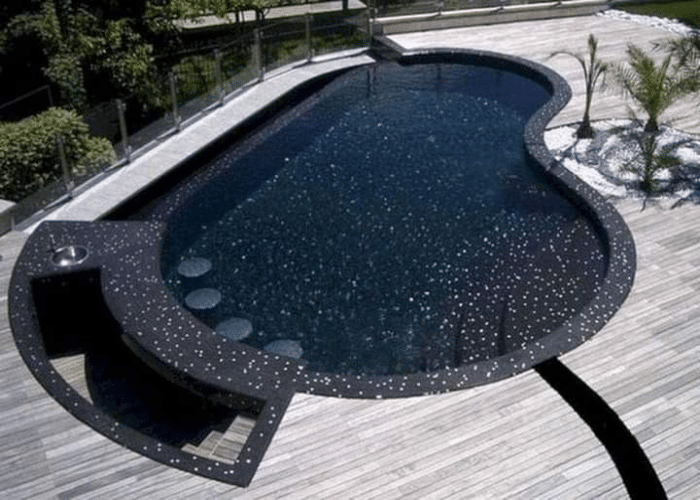
The black bottom pool is distinguished by its rich, dark color. They are sometimes referred to as dark bottom pools or black lagoon pools. As opposed to conventional pools with bright blue or white bottoms, they produce a spectacular contrast with the surroundings. Dark colors are a desirable alternative for chilly locations since they absorb sunlight and assist in maintaining warmer temperatures. The pool’s deep color also gives it an opulent, exotic appearance that is reminiscent of natural bodies of water like ponds or lagoons.
Factors Affecting the Price
Whether it is a black-bottom pool or a traditional pool, the price of a pool can vary widely depending on a number of criteria. The following are some elements that affect the overall cost:
1. Size and Shape
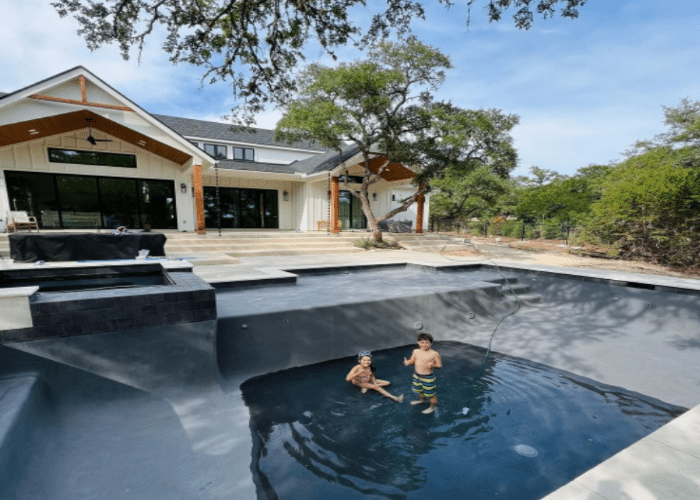
The pool’s size and shape have a big role in determining the price. Larger and more intricate designs often need more labor and materials, which can raise costs.
2. Materials
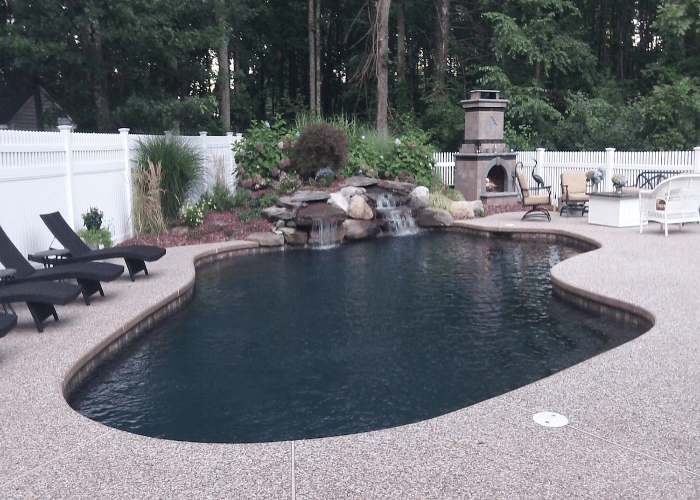
The sort of materials used to build the pool can have a big influence on the price. Concrete, fiberglass, or vinyl liners are just a few examples of the various materials that can be used to build both black bottoms and traditional pools. Costs can be affected by the material selection both immediately and over time.
3. Site Preparation
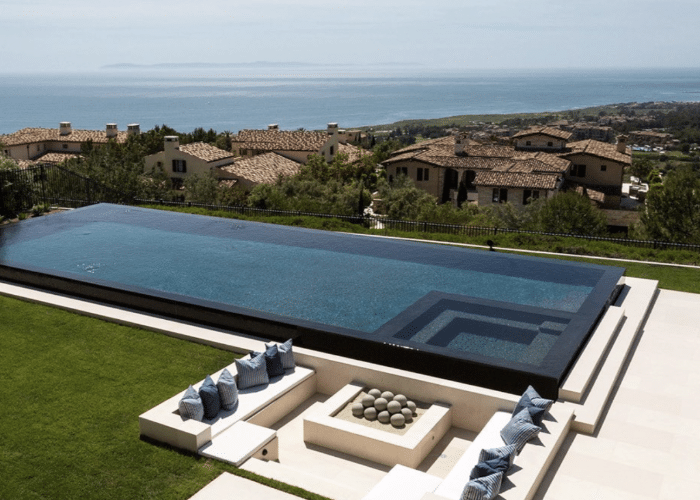
The quantity of site preparation required can be influenced by factors including the site’s terrain, the soil’s quality, and accessibility, which in turn influences prices.
4. Additional Features

Features like lighting, special landscaping, waterfalls, and fountains can improve the pools’ appearance and functionality while also raising the overall cost.
5. Labour and Installation

Worker availability, location, and design compatibility all affect labor costs for installation. The entire cost may be affected by the installation procedure, which can be complicated and time-consuming.
Costs Comparisons
Due to the same characteristics that affect pricing, black bottom pool and traditional pool may typically be found in the same price range. However, several details unique to each kind should be taken into account:
1. Black Bottom Pool
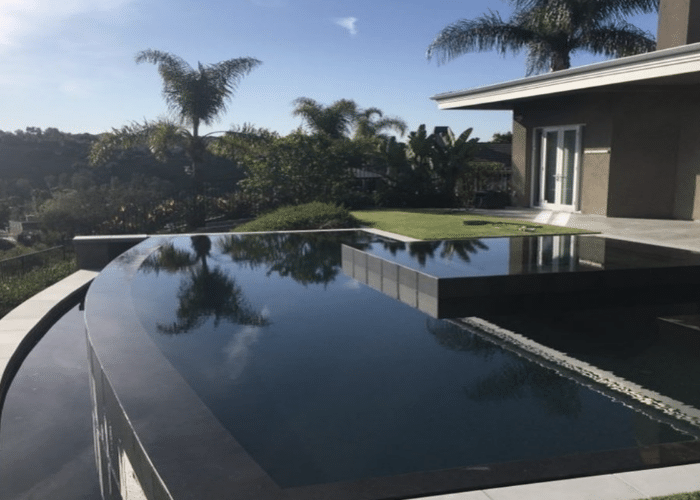
- To get the appropriate color and look for black bottom pools, specialized materials can be needed, which could raise the cost.
- In cooler areas, the pool’s interior’s dark color can aid with heat absorption and, hence, lower heating expenses.
- A black bottom pool’s aesthetics can cause a rise in demand and a modest increase in cost.
2. Traditional Pool
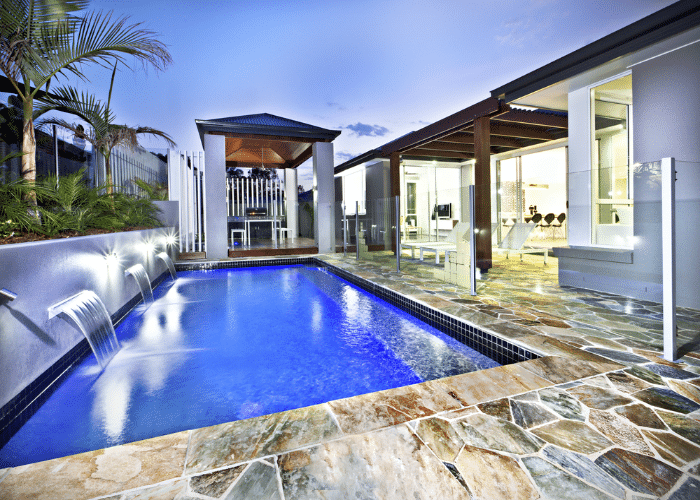
- The large range of designs, sizes, and materials available for traditional pools can have an impact on their price.
- Pools with vinyl liners are often less expensive than those with concrete or fiberglass, but the latter might be.
- Traditional pools come in a variety of styles, allowing homeowners to find one that suits their tastes and budget.
Do Black Pools Pose a Risk?

A black bottom pool’s main drawback is that it might be hard to determine its depth. It’s quite simple for individuals to underestimate how deep the pool is and plunge in feet first. And when they can’t see the bottom of the pool, kids are frequently prone to worry. In many areas, black bottom pools have been prohibited due to these difficulties, and others like them.
Do Black Bottom Pools Aid in Energy Cost Reduction?
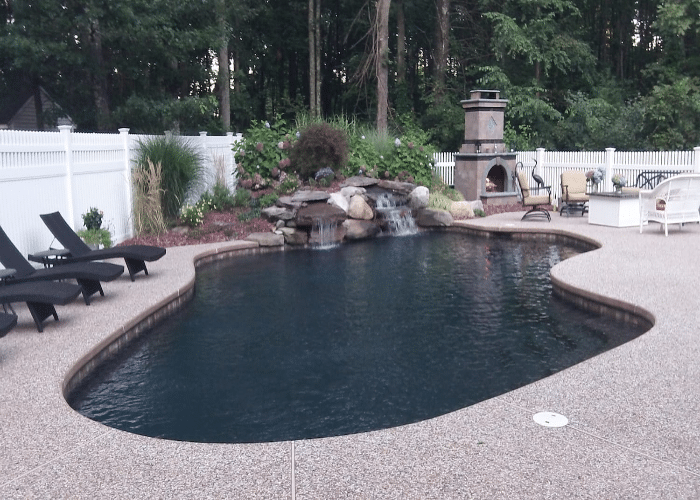
Whether pools with black or dark-colored bottoms heat up more quickly or not is a matter of considerable controversy. Most people believe that swimming pools with dark-colored bottoms heat up more rapidly. The swimming pool’s dark flooring and walls absorb the sun’s heat more quickly than its lighter surfaces. The pool heater doesn’t have to work hard when the water warms up more quickly, and dark colors enhance heat retention. As a result, heating bills are reduced.
Choosing an Option
It’s critical to consider both the visual appeal and the budget when deciding between a black-bottom pool and a traditional pool. Despite having a unique and alluring appearance, black bottom pools may have significantly higher pricing since they need specialized materials and are in high demand. However, depending on the materials used, traditional pools may provide more affordable solutions and a greater range of customization possibilities.
Conclusion
The choice should ultimately be based on your tastes, your financial limitations, and the overall architecture and landscape of your home. You may get a better idea of the expenses involved by speaking with pool contractors and requesting different quotations. This will enable you to make an informed decision that fits your vision and financial condition. Having a private sanctuary in your backyard will surely be a worthwhile investment, whether you choose the dramatic appeal of a black bottom pool or the adaptability of a traditional pool.
Comment and let us know your views, too.

